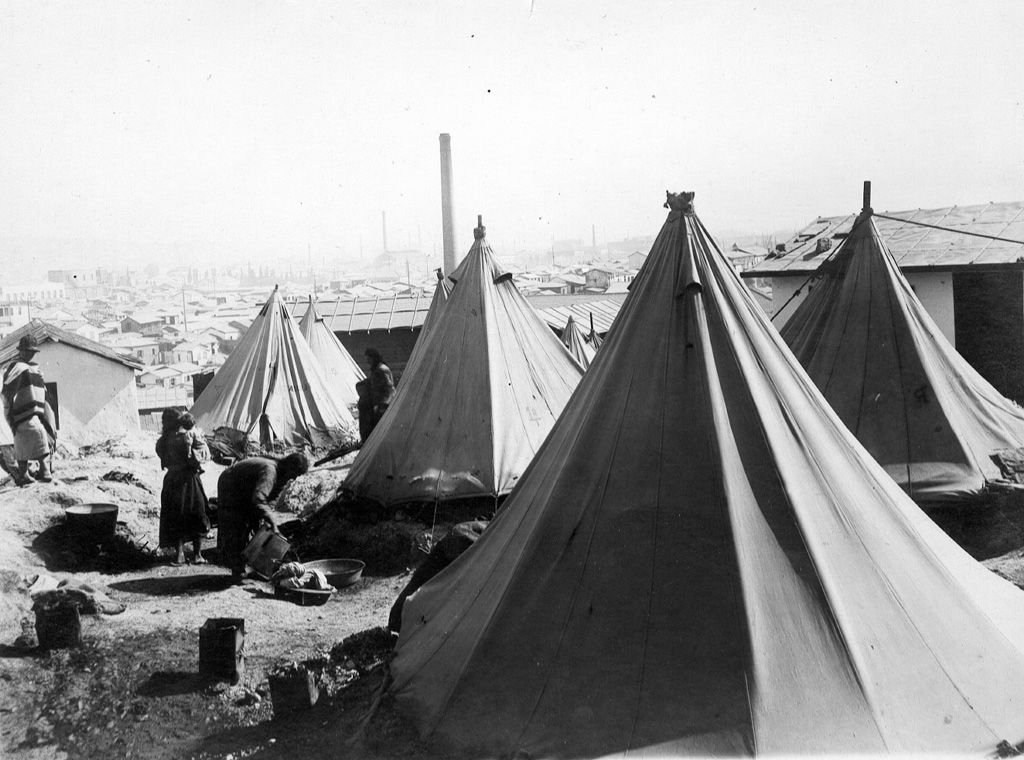The establishment of Nea Kokkinia
‘Two thousand refugees from Asia Minor arrived in Piraeus yesterday on the steamboats Genua and Amazonia. Of them, 1,500 were wealthy while the rest were destitute. They were received by the Ministry of Welfare and distributed in various refugee housing facilities in Piraeus. The Ministry also ordered the municipal services to provide them with food and medical assistance’.
This single column from Empros, on August 31, 1922, signalled the transition into a new era. In September 1922 alone, more than 40,000 refugees arrived at the port of Piraeus. For those who settled in the wider Attica region, it was their final destination; for others it was merely a transit point in a longer journey. Refugee settlement, whether permanent or temporary, was the biggest and most pressing issue that the state apparatus was called to resolve after September 1922. The refugees had to be distributed across the Greek territories and also had to secure some form of housing and employment.
Tens of makeshift residential clusters were created around the centre of Piraeus in the first weeks after the arrival of the refugees in September 1922. Some of them evolved into actual neighbourhoods. One of these makeshift residential enclaves was created on the northern border of the Municipality of Piraeus, on the banks of the Kanapitseri stream, and it quickly evolved into the Nea Kokkinia settlement. The originally erected tents and shacks soon became an entire city, whose core was the residential cluster designed by the Refugee Relief Fund and the Refugee Settlement Commission as part of a central housing scheme.
Today, the stream, known as Souda, and the two streets now called Tzavella and Belogianni are the boundaries between two cities, Piraeus and Nikaia. For decades, though, they formed a border delineating two different worlds, the urban and the refugee world. Despite the fact that the few refugee houses that still survive have been restored and expanded, they still remind us of how hectically the refugee arrival imposed a new reality, but also, conversely, that the pace of the rehabilitation and settlement process was slow and inconsistent. The last makeshift hovels in Souda were demolished at the beginning of the 1960s as part of a housing rehabilitation scheme by the Ministry of Social Welfare that aimed at rehabilitating the last urban refugees who still lived in makeshift dwellings.
At the intersection of the streets known today as March 7th, Tzavela, and Belogianni, in what constituted the commercial centre of the original refugee enclave, there was a bridge that ensured the unimpeded flow of vehicles to and from the settlement during the first years of its existence, especially during the winter months when the water levels in the stream would rise. There were also several wooden pedestrian bridges along the settlement to allow the residents, workers and visitors to cross from Palaia [Old] to Nea [New] Kokkinia and vice versa. Today, the bridge itself might not be there anymore, but the imaginary border between Palaia Kokkinia and Piraeus is crossed everyday by hundreds of migrants from Eastern Europe, Albania and Pakistan on their way to work, reflecting both the transformations and the continuities of the city.
Objects

